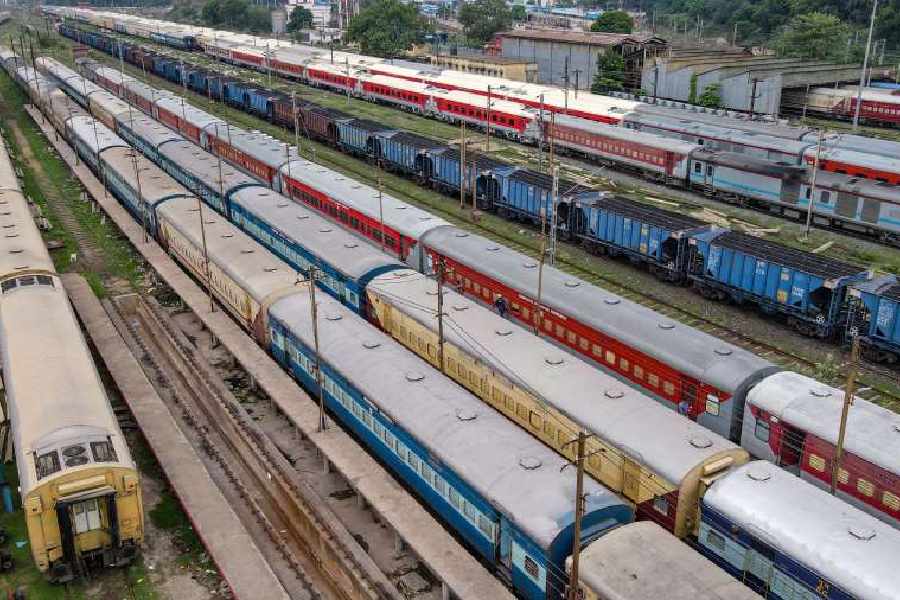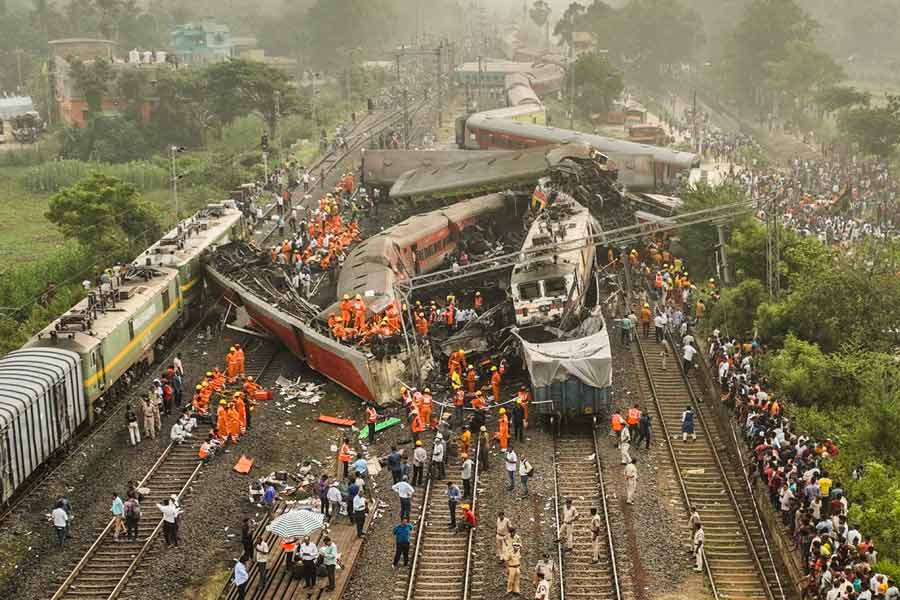A special fund created by the Narendra Modi government in 2017 to improve railway safety was misused to buy foot massagers, crockery, electrical appliances, furniture, winter jackets, computers and escalators, develop gardens, build toilets, pay salaries and bonuses and erect a flag.
The horrifying detail is tucked away in an audit report on derailments in the Indian Railways, submitted by the Comptroller and Auditor General (CAG) in December 2022.
A random audit scrutiny of 11,464 vouchers over four select months — December 2017, March 2019, September 2019 and January 2021 — pertaining to a 48-month period from 2017-18 to 2020-21 and covering two chosen divisions of each zonal railway revealed “incorrect bookings of expenditure” worth Rs 48.21 crore under the safety fund.
This may prove to be the tip of an iceberg in a tale of villainy and deceit that have undermined the noble principles that underpinned the creation of the Rashtriya Rail Sanraksha Kosh (RRSK), a dedicated fund to improve railway safety.
The scheme was unveiled in the budget for 2017-18.
Arun Jaitley, then finance minister, had said: “For passenger safety, a Rashtriya Rail Sanraksha Kosh will be created with a corpus of Rs 1 lakh crore over a period of five years. Besides seed capital from the government, the railways will arrange the balance resources from their own revenues and other sources.”
The genesis of the problems that have enveloped a rickety railway system – touted as the third largest in the world – lies in the manner in which the fund was created, and the money parcelled out to fund someone’s whimsical desires for fripperies and a concertina of low-priority, safety-related spending.
In a tweet, the Congress party railed: “Modi government excels in misusing funds! According to CAG reports, the Indian Railways spent extravagantly on foot massagers, crockery, furniture, car rentals, laptops & much more from the ‘Rashtriya Rail Sanraksha Kosh’.”
This spending sleight of hand and the sharp rap that the government auditors delivered to the railway czars may never have become public if it weren’t for the triple-train accident last week in Balasore. As many as 288 people were killed and many injured in the country’s worst rail disaster in over two decades.
The CAG report throws into stark relief the cavalier attitude of the top brass in the railways to the most critical aspect of running 22,593 trains transporting 2.4 crore passengers and another 9,141 goods trains every day across 114,907km of rail network: passenger safety.
The CAG report starts by drawing attention to a white paper on the Indian Railways, prepared in 2015, that recommended that 4,500km of tracks in the 1.14 lakh-kilometre railway network be renewed annually.
This was one of the principal reasons why the safety fund RRSK was set up in the first place.
Poorly funded
The report says the RRSK was always poorly funded. Under the original terms, a sum of Rs 20,000 crore was to be shovelled into the safety fund every year. Out of this, a sum of Rs 15,000 crore would come from the Centre in the form of gross budgetary support; the remaining Rs 5,000 crore was supposed to come out of the railways’ internal resources.
Over a four-year period, the railways were supposed to stump up Rs 20,000 crore. But all they could provide was Rs 4,225 crore – leaving a shortfall of Rs 15,775 crore in their contribution, or 78.9 per cent.
“The short deployment of funds by Railways from internal resources to the tune of Rs 15,775 crore (78.88 per cent) out of the total share of Rs 20,000 crore had defeated the primary objective of creation of RRSK to support absolute safety in Railways,” the CAG observed.
If that wasn’t bad enough, the report says that officials were spending money on inconsequentials. The share of non-priority works under the RRSK grew from 2.76 per cent in 2017-18 to 6.36 per cent in 2019-20.
In absolute numbers, Rs 1,004 crore was spent under this head in 2019-20 flouting clear guidelines on how funds under the RRSK, announced in the central budget of 2017-18, were to be spent.
“The increasing trend towards expenditure on non-priority works is against the guiding principles of RRSK fund deployment framework, which stipulates that the Priority-I works should be met with first charge on RRSK,” the CAG report said.
Civil engineering works, which include track renewals, are classified as priority-1 work under the RRSK, which was originally supposed to have a corpus of Rs 119,000 crore that was scaled back to Rs 1 lakh crore.
The auditor found that expenditure under the RRSK showed a declining trend from 81.55 per cent in 2017-18 to 73.76 per cent in 2019-20. The allotment of funds for track renewal works declined from Rs 9,607.65 crore in 2018-19 to Rs 7,417 crore in 2019-20.
The auditor report shows that the railways were unable to utilise even the funds given to them. In the year 2017-18, seven zonal railways (ZRs) surrendered funds worth Rs 299 crore. Similarly, in the year 2018-19, nine ZRs surrendered funds amounting to Rs 162.85 crore. In 2019-20, five ZRs returned funds amounting to Rs 11.68 crore.
Going off track
The CAG’s analysis of railway accidents between 2017 and 2021 indicates that 1,392 of the 2,017 accidents, or 69 per cent, were derailments. If only “consequential” train accidents – which is railway parlance for serious accidents involving the loss of lives -- are taken into account, the proportion of accidents caused by derailments and collisions works out to 80 per cent.
“Analysis of 1129 Inquiry Reports of derailment accidents in 16 Zonal Railways (ZRs) revealed 24 factors responsible for derailments in the selected cases/accidents. The total damages/loss of assets in these cases was reported as Rs 32.96 crore,” said the report.
While 422 derailments were attributable to the engineering department, the major factor responsible for derailment related to “maintenance of track” (171 cases), followed by “deviation of track parameters beyond permissible limits” (156 cases). In all, 182 derailments were attributable to the mechanical department and there were 154 accidents attributable to the loco pilots. “Bad driving/over speeding” was also a key factor.
The number of accidents attributable to the operating department was 275 and “incorrect setting of points and other mistakes in shunting operations” or moving trains between yards and platforms accounted for 84 per cent.
Of the 1,127 derailments during 2017-21, 289 were linked to track renewals.
A performance review of derailment in the Indian Railways was presented in parliament on December 21 last year.
Railway ministry officials said that as is the practice, the ministry replied in detail to the findings of the report during the monsoon session of Parliament.











